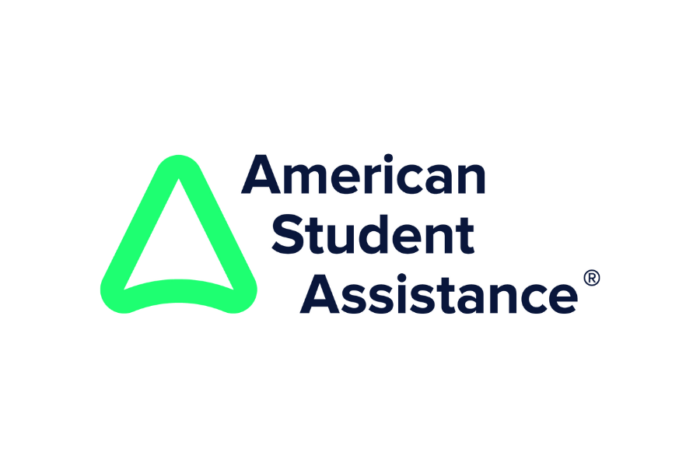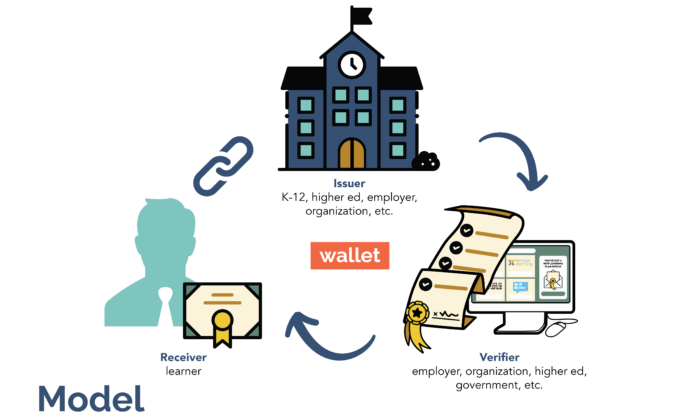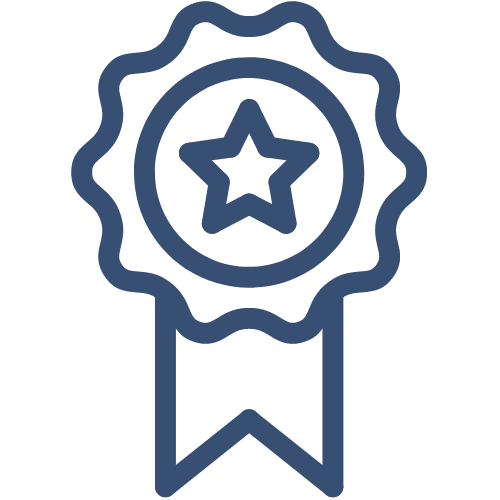
Executive Summary
This report examines the evolving landscape of credentialing and learner records within global education systems, highlighting a shift from traditional time-based signals—such as courses and grades—to competency-based signals (credentials and learner records).
These new frameworks prioritize measurable skills and achievements, providing a more precise evaluation of an individual’s capabilities. By capturing and communicating these competencies effectively, this transition not only aligns educational outcomes with real-world demands but also enhances the transparency and mobility of learners in a dynamic job market. This report outlines the current practices and trends, proposes an experience taxonomy and translation model, and recommends best next steps for K-12, higher education and workforce leaders.
Our Methodology
To begin this exploration of the credentialing landscape, we formed a steering committee, composed of experts and operators, to unpack the questions around capturing and communicating work-based learning experiences. In addition, we interviewed more than 40 credentialing leaders to address the three core research questions (see the Recommendations and Acknowledgements page for individual names and organizations).
Interviewees identified concerns with our original line of thinking, which included:
- Imposition on network sites with established language and models.
- Imposition of standardized measures of rigor, variety and complexity and allowing for variability.
- Value by employers as credentialed experiences are valuable but not valued.
- Cost of credentialing and building adopted recognition.
- Disruption of the validation and recording of credentials by emerging technology
- Impact of unbundled learning on the value of pre-existing curriculum and teacher expertise.
This research led us to the following vision.
Vision
The American education system requires a new architecture constructed around new goals, new learning experiences and new signals of learning.
- Goals: Education should equip young people with skills, knowledge, confidence and resources to develop purpose, engage civically, earn a family-sustaining wage and contribute to their community. These aspirations are increasingly communicated as a portrait of a graduate or learner profile.
- Experiences: Powerful experiences (in and out of school) develop and demonstrate important learning goals. Moving from time to learning as the most important metric will expand access to valuable experiences.
- Signals: Demonstrations of learning captured in a robust credentialing ecosystem will power the transition from transcripts and resumes to a more actionable and portable digital record, or Learner Employment Record (LER).
Realizing this new education architecture expands access for all learners, particularly those on the margins; expands value to both the learner and the workforce and expands experiences as a core component of both verifying skills and encouraging community connection.
While the formula is currently Graduation = School Experience + School Authorized Credential, a more useful equation would look more like Graduation = Valuable Experiences + Credentialed Skills.
Credentialing Continuum
Education systems around the world are on a continuum toward this LER ecosystem, but most exist in Stages 1 and 2.
- Stage 1: Transcript (grade and courses only)
- Stage 2: Opportunity to earn beyond transcript but not on transcript (CNA, CTE certs)
- Stage 3: Extended transcript lite (endorsements, awards, credentials, experiences mentioned on the second page of a transcript)
- Stage 4: Full LER ecosystem (skills-based transcript or LER wallet)
Understanding the Current State of Credentials
The credentialing landscape is massive and complex. As of 2024, employees and learners can earn nearly a million viable credentials to demonstrate competency. In fact, one of the leading credential providers, Credly, has awarded over 81 million credentials to date. The number of awarded credentials is rapidly growing. A Lumina sponsored report found that 28 states have invested at least $3.8 billion in short-term credential pathways. Although credentialing is a widespread form of capability communication (in support of employment, enrollment, enlistment), it has had limited benefit to those who earn the most credentials. To reach its full potential in positively impacting learning, exploring and hiring/matching, credentialing requires a more transparent and efficient marketplace.
One driving force in the shift to credentialing is the rise in competency-based education (CBE), an initiative to communicate demonstrated mastery of academics, skills and aptitudes. Competency-based assessment systems are vehicles through which secondary and higher education systems can transition from a Carnegie Unit approach (course/letter grade/credit) to a mastery approach (skill/competency/credit). Fundamentally, this is a restructuring and realignment of new and expanded learning goals. As of 2024, 17 states have adopted a state-wide Portrait of a Graduate, capturing broader goals and shifting toward a more competency-forward signaling system.
In addition to competencies and credentialing, many high school and college students are securing valuable real-world learning experiences, including internships, client projects and entrepreneurial experiences. These experiences develop and demonstrate a wide range of important durable and technical skills in complex career-relevant contexts, but they aren’t well represented, if at all, on traditional transcripts. They may appear on a resume but with weak descriptions and no verification of rigor, learnings, and demonstrated competencies. Integrating CBE, credentials, and real-world learning experiences is a crucial next phase of signaling learning, namely, as Learning and Employment Records (LERs).
Employers also struggle to find and develop talent. Nearly 60% of human resource and talent development professionals struggle to find candidates with the ideal combination of technical and durable skills that match their organization’s requirements. This indicates a significant workforce gap where students feel underprepared for workforce and college, let alone making decisions about what to do next; and the workforce finds hiring to be expensive and ineffective. The signals themselves (grades, online skill courses, etc.) don’t serve as accurate barometers of competency. These related challenges are undergoing separate transformations in K-12/higher education, workforce, and hiring.
In order to support learners in identifying and pursuing meaningful pathways, finding ways to contribute to community, and to support employers in decreasing cost and risk while increasing efficiency and talent, credentialing ecosystems need thoughtful scaling and implementation involving state-level leaders and community-level leaders. These new signaling systems help learners communicate their capabilities and help employers determine capability in context.
- Employers seek durable/transferable skill validation. Skill assessments will be broadly piloted before skills credentialing becomes prevalent in high schools and postsecondary education. As skill credentialing expands, it will drive LER adoption.
- A skill without application to a task is not inherently useful: Verified and stored learning experiences will grow in value as they communicate the application and validation of important demonstrated skills. Additionally, they could gain early adoption in extended transcripts before LERs really take hold. Extended transcripts supplement traditional course-based transcripts with competency/skill proficiency data.
- AI will support conversion and translation of experience to skill validation: The data collected about experiences will be more articulate than the credential itself. This will increase the ease of adoption for colleges and employers, making the skills portable between multiple outcome frameworks.
When describing skills, it’s helpful to distinguish between three discrete skills frameworks: core, technical and transferable. A closer look at their similarities and differences reveals why effective communication requires unique inputs and incentives.
Transferable Skills (Applied or Durable)
Employers frequently report that new employees have a deficit of transferable skills. Some states, districts, and schools have advanced their focus on ensuring that each graduate demonstrates proficiency in these types of skills. We compiled numerous portraits of learners, teachers and leaders and made the case for community-wide portraits in a recent publication called The Portrait Model.
As mentioned earlier, some of these examples exist at the state level: Iowa’s Universal Constructs, Utah’s Portrait of a Graduate, Nevada’s Portrait of a Learner, and South Carolina’s Profile of a Graduate provide solid examples of transferable competencies that should be evaluated both in high school and higher education. Non-governmental organizations have also described sets of durable skills, such as XQ Learner Outcomes, America Succeeds Durable Skills, and the World Economic Forum’s Top 10 Skills.
While states and other organizations play an important role, it is critical to consider community validation in this process, as skills and desires vary from community to community. Kansas City Rising and the DeBruce Foundation compiled a set of regional Essential Skills based on input from local employers and educators. Indianapolis’ Job Ready Indy defined six regionally defined workplace readiness competencies and an associated curriculum. When students who enroll in this workplace readiness pathway demonstrate proficiency through the curriculum, they receive badges that count toward graduation requirements.
While transferable competency evaluators are rare, a few efforts are underway, such as the National Career Readiness Certificate (ACT), leading to a certificate, and CTECS Workplace Readiness Skills assessment, leading to badges. Additionally, CAE administers the College and Career Readiness Assessment to evaluate critical thinking, problem solving, and communication for middle and high school students.
The Skills for the Future Initiative, a joint project of Carnegie Foundation and ETS, includes Mastery Transcript Consortium and is developing new assessments and learner records that demonstrate mastery of both durable and core skills for employers and colleges. State partners include Indiana, Nevada, North Carolina, Rhode Island and Wisconsin.
These skills can also be taught through mindsets and dispositions embedded in all workforce sectors, like entrepreneurship. The Entrepreneurship and Small Business credential from NFTE (and verified by Certiport) is an effective way to teach these skills alongside more technical skills like design thinking, finance and marketing. The certificate can then be submitted for college credit via ACE.
Technical Skills (Industry-Recognized)
Technical skills are well-described in the CTE Career Clusters and implemented in most U.S. high schools. Leading to Industry-Recognized Credentials (IRCs), proficiency in these competencies may not lead to a higher education degree but does provide specific skill validation for career pathways, improving hiring rates. Unfortunately, many students take disconnected single CTE courses rather than becoming a “completer” of three courses in a sequence, therefore not reaching mastery, not earning the IRC and not progressing along a pathway.

The introduction of shorter-duration, high-relevance IRCs may help increase IRC completion. Additionally, ensuring that a broad spectrum of CTE programs is available—especially in computer science and other STEM disciplines—provides equitable access to lucrative careers in the future. Appropriate staffing, reputation, access and replication pose challenges to this long-standing and well-funded credentialing program within the United States that focuses on technical skills.
In addition to CTE, work-based learning (WBL) is on the rise. WBL is defined as: “sustained interactions with industry or community professionals in real workplace settings, to the extent practicable, or simulated environments at an educational institution that fosters in-depth, firsthand engagement with the tasks required in a given career field, that are aligned to curriculum and instruction.“ within the Perkins V federal legislation. There is a high level of interest in this type of community and industry-connected learning and Indiana, Ohio, Kansas City and other states and regions have begun incorporating this kind of learning into their graduation requirements, despite the difficulty of capturing proficiency along traditional forms of measurement. Participation in work-based learning programs remains low due to the complexity of implementation and scale, but intermediaries like GPS Education Partners are helping to make these connections easier and long-lasting.
Core Skills
In the public sector, educators link course content to specific standards, and many districts track how well students meet these standards, particularly in elementary school. Ideally, completing a course should demonstrate a student’s proficiency in these areas. However, in practice, especially in higher grades, assessments often rely on traditional quizzes, tests, and essays. These contribute to an overall course grade but fail to clearly show how they relate to the standards.
Just like the career clusters in the technical CTE areas, core skills should focus on English language arts, mathematics (including data science, finance, and statistics), social studies (e.g., National Council for the Social Studies civics competencies), science (NGSS already has a set of disciplinary core ideas, practices, and cross-cutting concepts wrapped up into a single standard set—which could become a competency), arts, second language, etc. XQ Competencies integrate some elements found in standards with transferable competencies in an effort to expand transferable competencies into domain areas.
ACT composite scores from 2023 (English, math, science, reading) reached a 32-year low in college readiness. Given these reported gaps around core skills in graduates, it makes sense to expand credentials to include these skills in addition to technical skills found in CTE programs and the durable skills discussed above.





